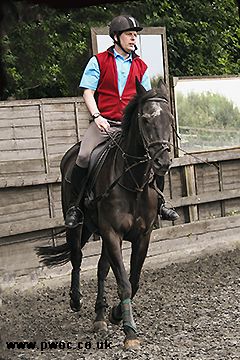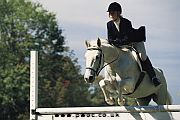Pilates for Riders -Pilates for Dressage - Equestrian 
Pilates can improve your riding
Pilates for riders - Pilates for dressage is a method of exercise to improve not just your own posture and core stability but to also transform your riding. Over the years I have developed my Pilates training, riding and athletic performance to incorporate core stability in order to propagate and control the energy from the body's centre into free, flowing, fluid movement of the rest of the body. Also with Pilates training you can slowly get to understand how getting a horse on the bit is really about the engagement of the belly of the horse - lengthening the horse's spine too. Pilates for dressage workouts can be used while mounted to achieve the ease and grace of top level riders. By being more aware of your own spine and posture you soon become more aware and engaged with the horse's posture and ultimately "on the bit" and lengthening and collection. The feel for lengthening and collecting of a horse's gait often take years to develop, but with Pilates you can reduce this time considerably. Pilates has been described as strength and stretch with control - this could just as well fit for explaining dressage and riding - "that the horse be strong and supple plus have the ability to control how it's moving"

Joseph Pilates often talked about the grace, poise and suppleness of animals when he spoke about the Pilates method.
Why Pilates for Riders? There are many ways to condition the human body to prepare it for athletic performance. However, few sports require both the human and another animal to be performing in unison. Riders requiring to become fitter to ride better can find that other exercise programs will not necessarily improve their ability to ride horse more efficiently. While exercise generally will get a rider fit, it may not improve the riders skills. Pilates for dressage are designed to teach the rider how to integrate and utilize the knowledge from exercising into the art of dressage. Much emphases is placed on "feel" of one's one body to later take into the "feel" of the horse. Learning to feel engaged in one's own core muscles can lead to feeling the engagement of the horse. With practice Pilates for riders can de-mystify the "how to moments" to become "ah-ha movements". A strong core is required for the equestrian to maintain an efficient posture on the horse. The core provides stability on a mobile surface (the horse's back) and counteracts the dynamic forces of the horse's gait that act on the rider's body. Good riding requires the rider to use the seat, legs and hands independently. A poor core is seen when the rider grips with the legs and or uses the hands for balance. These can inhibit the clarity of the rider's aids for command. It is with Pilates that a rider can develop independent use of the seat, legs and hands to maintain a strong and supple centre and to transfer this to engage the horse fully.

The Six Principle of Pilates for Equestrian
There are six main principles of Pilates for riders; at the start of Pilates training three principles are taught: centering, concentration and control. As the student develops three more are introduced: precision, flow and breathing. To begin with at the start of learning Pilates for riders unlike normal Pilates emphases is placed on using the trapezius muscle to keep the shoulders back and down. This is important for riders to maintain stability and symmetry in the whole of their trunk while riding. Slowly with time the rider develops an awareness of the right amount of muscle engagement necessary to keep the core and trunk lengthened yet supple and dynamic.
The Engagement of The Spine
For good form in dressage, the horse needs to be relaxed and supple, engaged and move in a circle of energy, which starts from the horse's hind legs, moves up over the back, up the neck and out the poll to be transferred to the rider's hands. It's from this engagement that the horse can become supple longitudinally and hence the ability to lengthen and collect the horse for the subtle movements required as you progress. Often riders stay confused with these terms as they are called out from the instructor in terms like "rounder" or "allow him to lengthen". Most riders know the feeling when the horse is not engaged and there is no circle of energy - the horse is disconnected, drops the back and tenses the neck. Often the rider too has a hollow back, stiff neck and braces the body with the arms and legs for balance. So by being engaged yourself you soon learn how to feel the horse engaged more. For definition by engagement - it can be defined as the ability to have active muscular control over both the strength and flexibility of the muscles of the body in order to use the body at will and with precision. It is through Pilates that the rider can learn balance flexibility with strength in the core and trunk to create engagement.

In dressage, using the knowledge and skill gained from Pilates can help improve the mystery of how to achieve the directives of dressage. Pilates is not designed to take you away from your riding instructor - this is the professional who is teaching you how to ride your horse - but if the horse and rider can utilize the physical abilities gained from Pilates the union of rider and horse can only improve. The rider is encouraged to experiment with what is taught to find a better feel for their seated position and use of muscular tension when applying the aids to riding. The above considerations make it clear that the different aspects of a healthy musculoskeletal system are intertwined. Poor posture, abnormal muscle length and weak abdominals will affect the way someone moves the body and the efficiency of those movements. A rider with optimal posture, core strength and flexible muscles will perform movements more efficiently and with less effort.




